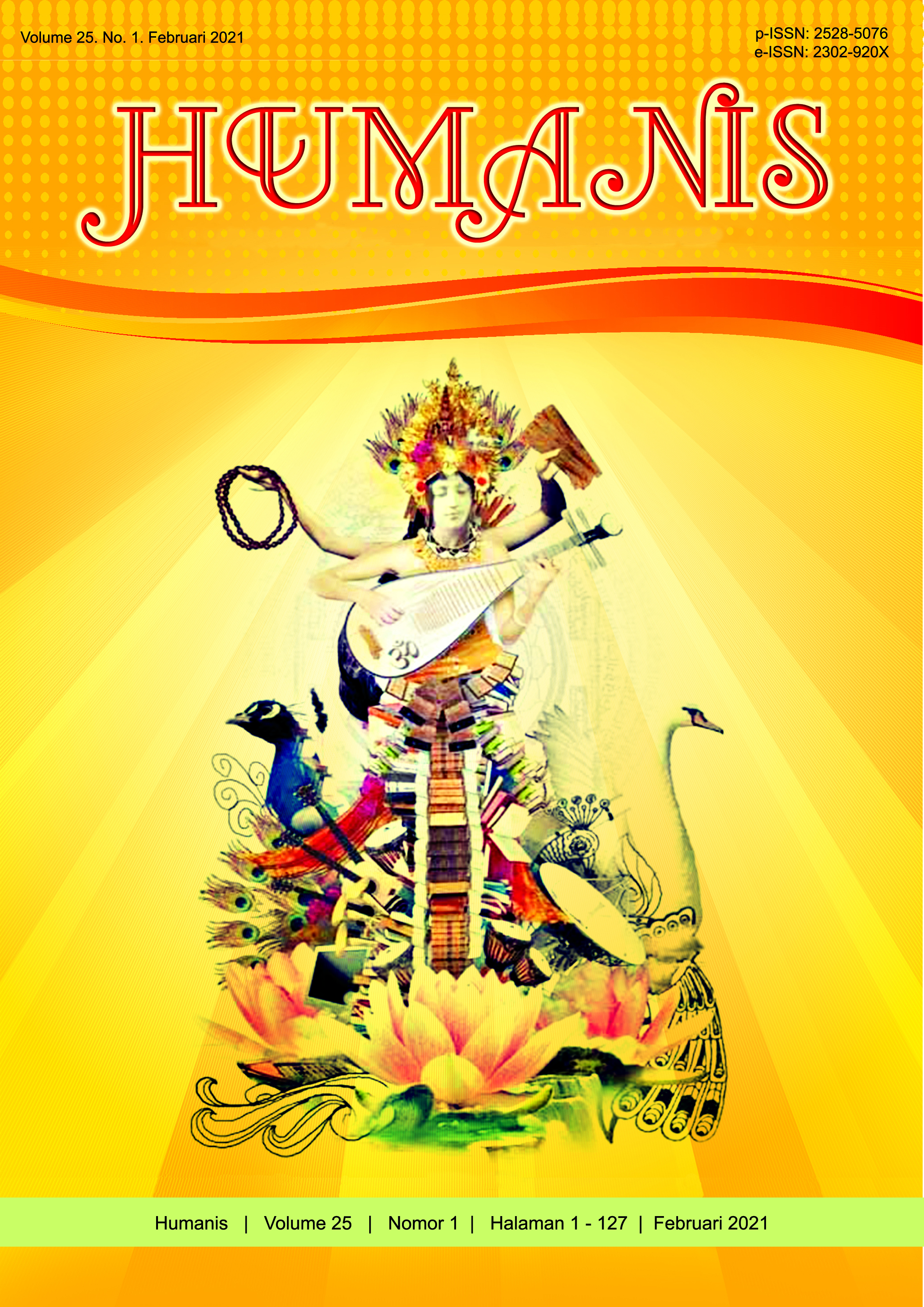Lexical Hedges in Mamma Mia! Movie
Abstract
The study is aimed to generally identify the types of lexical hedges used in the movie script and to determine the function of lexical hedges used. The data of this study were taken by using documentation method and note-taking technique from the movie Mamma Mia!, which firstly released in 2008. The movie is originally conducted by Phyllida Lloyd and also written by Catherine Johnson based on the 1999 musical of the same name, which is based on the songs of famous pop group ABBA. The data were analyzed descriptive qualitatively using Lakoff’s theory about women’s language features (1973). This study revealed that there were four examples of lexical hedges found in Mamma Mia! movie.
Downloads
References
Alhumaid, Anfal. (2017). Language and Gender: a Socio-Cultural Feature Dominating Perception. International Journal of Humanities and Social Science. Vol. 7, No. 2; February 2017
Atmawati, Dwi. (2018). Gender Bias in Javanese Society: A Study in Language Forms Choice to Men and Women. International Journal of Humanities Binus University. Vol. 9, No.3
Budiarta, I Wayan. (2017). Balinese Women and Men and Their Language. International Journal of Linguistics. Vol 9, No 5.
Chandra, Diana. (2018). Nicki Minaj’s Comments in American Idol Season 12: An Analysis of Women’s Language Features. International Journal of Humanity Studies. Vol.1, No.2, March 2018, pp. 185-193
Juwita, Tri Puspa. (2016). The Differences between Men and Women’s Language in the Devil Wears Prada Movie. International Journal of Cultural Sciences. Vol. 2, No.1
Kasni, Ni Wayan. (2017). Balinese Women and Men and Their Language. International Journal of Linguistics. Vol 9, No 5.
Khoirot, Aifi Umdatum. (2018). Women’s Linguistic Features in Two Dramas. Nobel: Journal of Literature, Language, and Language Teaching.
Lakoff, Robin Tolmach. 1975. Language and Women’s Place. London: Harper & Row Publishers.
Mulyani, Sri. (2014). Language and Gender: toward a Critical Feminist Linguistics. International Journal of Language and Literature. Vol. 14 No. 2.
Nurjanah, Oktanika Wahyu. (2017). Male and Female Student’s Linguistic Politeness in Speaking Classroom. International Journal of Pedagogy and Teacher Education. Vol. 1 No. 2.
Onem, Engin Evrim. (2018). A study on gender differences in the length of requests in Turkish. Journal of Language and Linguistic Studies. Vol. 12, No. 2, 13-21; 2016
Pebrianti, A. A. 2013. Women’s Language Features Used by Indonesian Female Bloggers. Humanis Journal of Arts and Humanities. Vol. 2 No (1), 109-118.
Paidamoyo, M. Gilda. (2016). Contesting the Existence of Male Speech Stereotypes within the Communicative Context of Nursing: A Case of Bonda Mission Hospital, Zimbabwe. Vol. 12, No.3.
Puspitasari, Desi. (2018). Women’s Linguistic Features in Two Dramas. Nobel: Journal of Literature, Language, and Language Teaching.
Sanjaya, I.B. Gede Dharma. (2018). Women’s Language in “The Nanny Diaries” Movie. Humanis Journal of Arts and Humanities. Vol. 22, No. 3, July 2015, pp. 804-809.
Shalaby, Menatella. (2019). A Cross-Cultural Study of the Representation of Women in Instagram Cosmetic Advertisements. International Journal of Gender and Women‟s Studies December 2019, Vol. 7, No. 2, pp. 58-67
Vandergiff, Jim. 2012. Is There a Women’s Language?. American International Journal of Contemporary Research “Vol.2 No.2 published by School of Arts and Sciences, New Mexico Highlands University United States of America 2012.
Hornby, Albert Sydney. (1989). Oxford Advanced Leaner’s Dictionary. Oxford: Oxford University Express.
Holmes, Janet. 1992. An Introduction to Sociolinguistic. London: Longman
Holmes, Janet. 1997. Woman, Language and Identity. Journal. Victoria: University of Wellington. Knickerbocker, K. L and William Reninger. (1963). Interpreting Literature. New York: Holt, Rinehart and Winston.
Hua, C. 2013. Critical Discourse Analysis of Women Language at the Lexical Level in Sense and Sensibility. Academic Research International. Vol. 4 No.2
Coates, J. 1986. Women, Men and Language. London: Longman.
Coates, J. & D. Cameron (eds.). 1989. Women in Their Speech Communities. Longman.
Eckert, P. 2004. Language and Gender. 3 rd Edition, United Kingdom: Cambridge University Press.M. A. K, Halliday. (2004). Halliday’s Introduction to Functional Grammar. Third Edition. New York: Hodder
Miftahul, Lisda. 2016. Women’s Language Used by the Main Character of Mockingjay Movie. Undergraduate Thesis. Malang: Maulana Malik Ibrahim State Islamic University.
Perrine, Laurence and Thomas R. Arp. (1992). Sound and Sense: An Introduction to Poerty. Moeller: English Department.
Coates, J (ed.). 1998. Language and Gender: A Reader. Oxford: Blackwell


















